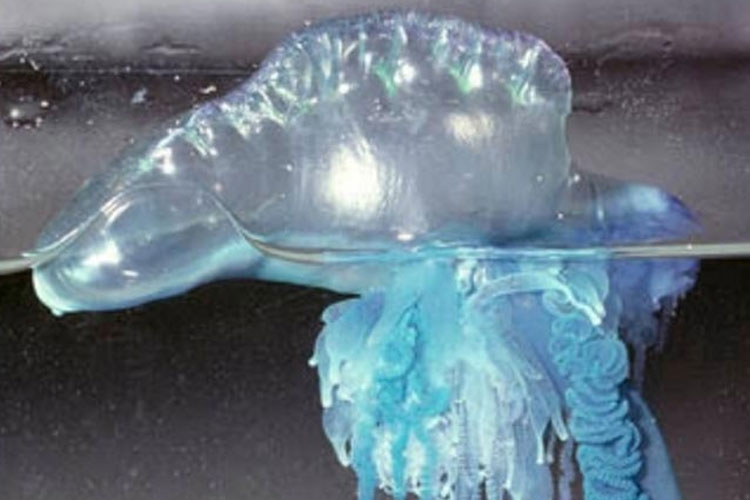Blue Bottle Jellyfish Caught at Sanur Bali: Safety Tips for Tourists

TIMESINDONESIA, DENPASAR – Sanur Beach, a beloved tourist destination in Bali, Indonesia, has recently been in the spotlight due to the presence of potentially dangerous blue bottle jellyfish. This natural occurrence typically takes place between July and September.
Its presence has prompted the Denpasar City Government to take action to ensure the safety and comfort of beachgoers. Here, we provide insights into this annual phenomenon and offer essential safety tips for tourists planning to visit Sanur Beach.
Advertisement
Understanding the Blue Bottle Jellyfish Phenomenon
Blue bottle jellyfish, also known as Portuguese man-of-war, are distinctive for their striking blue color and long tentacle-like structures that trail in the water. While they may appear fascinating, these creatures can deliver painful stings that cause skin irritation, redness, and discomfort. In more severe cases, jellyfish stings can lead to nausea, muscle pain, and other adverse reactions.
The annual appearance of blue bottle jellyfish near Sanur Beach is a natural event. It occurs due to strong winds that push these jellyfish from deeper waters toward the coastline. During this period, the Denpasar City Government collaborates with local fishermen and beach patrols to actively monitor the situation and ensure the safety of beachgoers.
Safety Tips for Tourists at Sanur Beach
Before heading to this tourist destination, check for any updated information about the presence of blue bottle jellyfish. Local authorities often provide advisories and warnings to keep tourists informed.
Paying attention to warning signs posted along the beach is also a good thing to do. These signs provide crucial information about potential risks and guidelines for beach safety.
While blue bottle jellyfish havea beutiful and atrractive shape. Yet its long, trailing tentacles that can deliver painful stings. When swimming or walking along the shore, be cautious and avoid touching these jellyfish.
It's important to keep an eye on your children if you have one. While you're visiting Sanur Beach with children, ensure they are closely supervised while swimming. Teach them about the potential dangers of jellyfish and the importance of staying away from them.
Familiarize yourself with the proper first-aid measures for jellyfish stings. If stung, rinse the affected area with vinegar (if available) or seawater, but do not use freshwater. Seek medical attention immediately.
Last but not leastt, if you or someone in your group is stung by a jellyfish, alert the nearest lifeguard or beach authority. They can provide assistance and guidance on further steps.
Enjoying Sanur Beach Safely
Sanur Beach remains a tranquil and beautiful destination for travelers seeking relaxation and natural beauty. By staying informed and following safety precautions, tourists can continue to enjoy this coastal gem while minimizing the risks associated with the annual appearance of blue bottle jellyfish.
Remember that cooperation among government agencies, local communities, and visitors is vital to ensure the safety and well-being of all who cherish Sanur Beach, Bali. Stay safe, stay informed, and make the most of your visit to this enchanting destination in Bali. (*)
**) Ikuti berita terbaru TIMES Indonesia di Google News klik link ini dan jangan lupa di follow.
| Editor | : Khodijah Siti |
| Publisher | : Sofyan Saqi Futaki |

